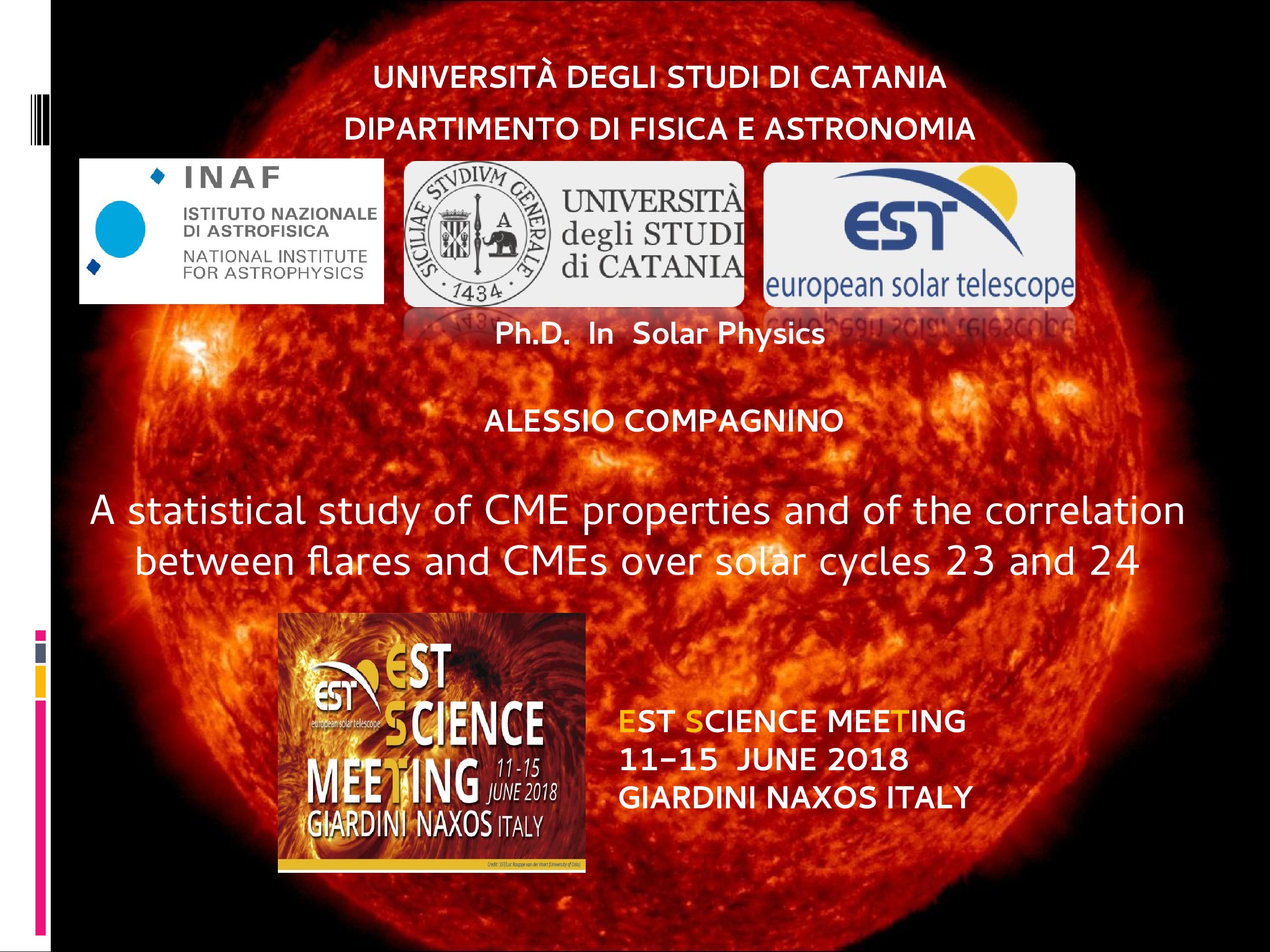A statistical study of CME properties and of the correlation between flares and CMEs over solar cycles 23 and 24
Affiliation
Catania University -INAF-OACT
Main category
Natural Sciences (Physics)
Abstract
The Large Angle Spectrometric Coronagraph (LASCO), onboard the Solar and Heliospheric Observatory (SOHO) provided us observations extending for the two Solar Cycles 23 and 24 (31 July 1996 - 31 March 2014) that allow one to compare some properties (speed, acceleration, polar angle, angular width, and mass) of Coronal Mass Ejection (CMEs). The Coordinated Data Analysis Workshops (CDAW) Data Center datasets uses manual identification for the detection of the CMEs, while the Computer Aided CME Tracking software (CACTus) datasets uses an automatic detection algorithm. Some important results found in this analysis, for both dataset, are that there are more CMEs during the maximum of Solar Cycle 24 than during the maximum of Solar Cycle 23, although the photospheric level and magnetic activity of the Sun during Cycle 24 was weaker than during Cycle 23. Peaks of CMEs observed by CACTus are of the same order of magnitude with respect to the two cycles, but the distribution of CMEs observed by CACTus exhibits a long lasting peak during the Solar Cycle 24. The discrepancy between the CACTus and CDAW results may be due to an observer bias giving origin to different definition of CMEs in CDAW catalog. In order to investigate on the correlation between Flares and CMEs, during the Solar Cycles 23 and 24 we used the Geostationary Operational Environmental Satellite (GOES) datasets that contain observations of 19811 flares of C-, M-, and X-class and found 11441 flares temporally correlated with CMEs for CDAW and 9120 for CACTus. We also found some characteristics of the mean CMEs velocity and acceleration of the CMEs associated with flares and the CMEs not associated with flares. The most important results of this statistical analysis is a log-log relationship between the flux of the flares integrated from the start to end in the 0.1 – 0.8 nm range and the CME mass, valid not only when we consider the energy released by the flare during the whole events, but also considering the flux emitted at the peak of the corresponding flares and the mass ejected by the CMEs.
Further reading
Compagnino, A., Romano, P., \& Zuccarello, F.\ 2017, \solphys, 292, 5
DOI
10.18147/smn.2018/presentation:317
Do you have problems viewing the pdf-file? Download presentation
here
If the presentation contains inappropriate content, please
report the presentation. You will be redirected to the landing page.
